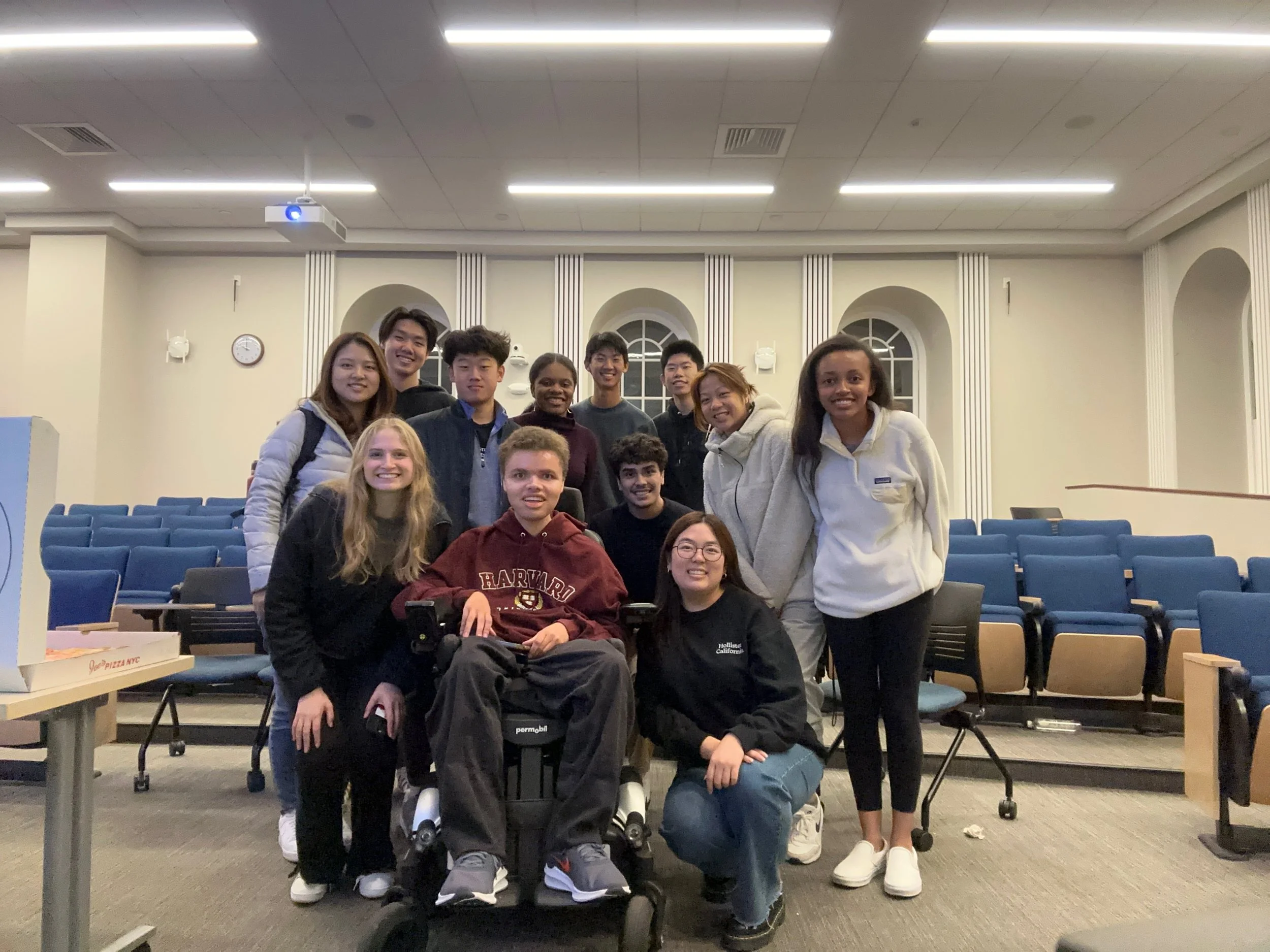Building it Better: Reconstructing a Healthier U.S. Refugee Resettlement Program
Pooja Agrawal
Abstract
The US refugee resettlement program has been gradually dismantled and defunded over the past four years. Once a leader in providing refuge to individuals displaced by global conflict, the US has all but stopped taking in refugees, many of whom have been displaced for years and are in need of critical medical attention. As we look towards rebuilding the US refugee resettlement program, not only do we need to re-establish baseline systems that existed previously but also create enhancements and employ innovative strategies that will provide better support for newly arrived refugees, allowing them to thrive in their new home.
The worsening global humanitarian crisis continues to impact millions of people, particularly those who have been displaced from their homes due to conflict. The 9.9M registered refugees in 2012 rose to 26.6M by 2019, largely from ongoing armed conflicts in Syria, Venezuela, Afghanistan, South Sudan, and Myanmar, among other countries.1 Resettlement can be a life-saving solution and is typically reserved for the most vulnerable refugees: those with medical needs, women and children at risk, and survivors of violence and torture.
Refugee resettlement, coordinated through the United States Refugee Admissions Program (USRAP), has been a fundamental component of US immigration policy for decades. Since the 1980s, 3 million refugees have been resettled in the US, most of whom have become successfully integrated US citizens.2 Through a network of nine resettlement agencies, refugees are distributed to cities across the country with established infrastructure to support refugees for a short time after their arrival.
While the trajectory had been to reflectively raise the refugee admissions ceiling and increase support to the program to meet the worsening global crisis, the past four years have brought dramatic changes in policy, a subsequent slowdown in arrivals, and slashed funding for refugee services. At a time when the number of refugees worldwide has reached its highest levels since World War II, the US has decreased refugee admissions to historic lows.3 As a result, fewer of the world’s refugees are offered resettlement and the opportunity to restart their lives. Instead, they are trapped in a state of displacement, typically waiting in a neighboring country, and often without the comprehensive services and support they need.4
Refugees often have neglected and untreated medical issues, stemming from their years of displacement, unstable and unreliable access to healthcare and medications, as well as physical and mental trauma caused by the circumstances leading to their displacement. With the slowdown of the vetting process and the reduced funding of the resettlement program, while more people with legitimate refugee claims and healthcare needs wait to receive appropriate or effective care, their health unnecessarily deteriorates.
Changing political sentiment along with the easing of travel restrictions in a post-pandemic world will likely lead to a reinvigoration of the refugee resettlement program. During this time, we have the opportunity to rebuild in ways that will not only re-elevate refugee admission targets but also more effectively address new challenges and improve the overall health of the population. Bringing the program back to baseline will necessarily include efforts to revoke recent policies aimed at undermining the USRAP, reinitiating the processing and vetting of refugees currently stalled in the pipeline, reinstating or replacing professionals and immigration advocates within the federal government, and supporting the network of domestic refugee resettlement agencies that are working to rebuild their local operations. Elevating it further will require modernizing the program to meet an evolving population, using technology more effectively to maintain and deliver data collected at each step of the screening process for use by resettlement agencies, and creating ways to ensure more inclusive dialogue and decision making as the program continues to develop.
Opportunities for improvement: better health records
One area of potential programmatic enhancement relates to the health information collected during the screening process. During the multi-year, multi-step vetting process, refugees undergo health assessments to identify specific infectious diseases of public health significance, such as tuberculosis or sexually transmitted infections. That assessment is repeated prior to travel if enough time has passed for new issues to potentially emerge. During that screening process, information about other medical conditions, such as substance use, psychiatric disease, and chronic illnesses is also collected. However, there is no reliable or consistent method of transferring this information forward, despite the obvious benefit having those data would provide a resettlement agency. Simplifying the screening process, improving the electronic capture and transfer of relevant information, and creating a shared platform for agencies to share data and ideas would allow them to better prepare for the medical needs of newly arrived refugees. Agency staff could pre-emptively identify appropriate healthcare providers, social services, and advanced resources prior to their arrival and facilitate the medical attention needed to minimize disruptions in care and exacerbations of chronic medical conditions.
Community Co-sponsorship
A different model of resettlement that has proven successful in other countries, including Canada, is the idea of community co-sponsorship. The Refugee Act of 1980 created a network of State Department contracted domestic resettlement agencies tasked with welcoming, supporting, and providing resettlement services to new refugee arrivals. They assist new arrivals with all the major elements of building a new life in a new country: healthcare, employment, housing and education, among others. During its early years, these streamlined processes functioned well to move refugees towards self-sufficiency. However, the funding provided to agencies to support each refugee is pre-specified and limited and is only intended for use during the first few months after resettlement. This short-term provision is often insufficient for refugees to integrate and become fully self-sufficient.
Community co-sponsorship, a program where refugee families are resettled by individuals who are part of a community, such as a faith-based group, ethnic group, family or humanitarian organization instead of a traditional resettlement agency, has proven a successful model in other countries and has many advantages.5 The more favorable ratios and personal commitment pledged by the sponsoring groups facilitates effective integration for new arrivals. Sponsored refugees integrate more quickly and successfully, find employment faster, and earn more than those resettled through government programs, in part due to the more tailored assistance provided by sponsoring groups.6 Refugees become more geographically dispersed so as not to overwhelm any one community or healthcare system. They also serve as de-facto ambassadors for the resettlement program: since more of the community engages with them on a personal level, it creates a human face and helps to dispel some recent falsehoods circulated about refugees. With enhanced engagement from sympathetic community members and more Americans involved in the process, refugees can benefit from better advocacy as well as higher quality and more accessible care.
The refugee resettlement program remains a bedrock of US immigration policy. As we reclaim our role as a leader in global humanitarian action, it is our duty to revive, revitalize, and renovate the resettlement process to build a better system than we had before.
About the Author
Pooja Agrawal, MD, MPH is the Director of Global Health Education in the Department of Emergency Medicine at Yale University. She holds faculty appointments in the Yale School of Medicine and Yale Center for Asylum Medicine and is on the Board of Directors of Integrated Refugee and Immigrant Services in New Haven, Connecticut.
References
- UNHCR. UNHCR Global Trends Forced Displacement in 2019. UNHCR. 2020.
- Krogstad JM, Radford J. Key facts about refugees to the US. Pew Research Center. 2017;30.
- Beers DJ. The End of Resettlement? US Refugee Policy in the Age of Trump. Social Sciences. 2020;9(8):129.
- Fee M, Arar R. What happens when the United States stops taking in refugees? Contexts. 2019;18(2):18-23.
- Steiner E. The Role of the Private Sector in Refugee Resettlement. 2018.
- Bond J, Kwadrans A. Resettling Refugees through Community Sponsorship: A Revolutionary Operational Approach Built on Traditional Legal Infrastructure. Refuge: Canada's Journal on Refugees/Refuge: revue canadienne sur les réfugiés. 2019;35(2):86-108.










Dr. Rose Molina is a board-certified Obstetrician-Gynecologist at The Dimock Center and Beth Israel Deaconess Medical Center. Dr. Molina holds a Master of Public Health in Clinical Effectiveness from the Harvard T.H. Chan School of Public Health, and is an Assistant Professor of Obstetrics, Gynecology, and Reproductive Biology at Harvard Medical School, where she is also the Faculty Director of the Medical Language Program and Health Equity Societal Theme. Additionally, Dr. Molina is a member of Ariadne Labs where she works to improve quality and equity in pregnancy care worldwide. As an AHRQ Learning Health Systems K12 scholar, she leads research on language barriers in pregnancy care and improving patient-clinician trust.